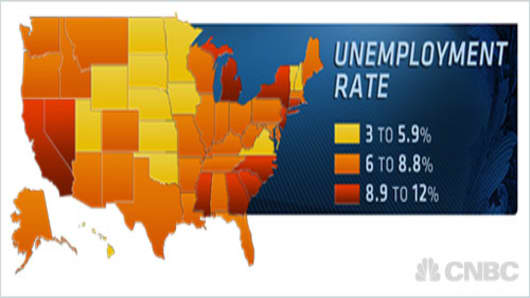It could be that the positive momentum in the rate, added to the power of the incumbency, is sufficient to keep Obama in the White House. It could equally be that the high level of unemployment is a key factor in winning Romney the job.
(Read More: Too Close to Call? A Look at Election Nail-Biters)
However, the split support among the unemployed suggests Romney was not overwhelmingly successful in winning the support of those who have personally experienced joblessness. That could be because his message on jobs was not strong enough or because other factors — race, political leaning and especially income level — were more important.
The demographics of the unemployed skew slightly less white than the broader population. But it's hard to attribute the split among the unemployed to ethnicity.
White voters overall break 57% to 38% for Romney. White voters who have experienced unemployment break 57% to 42% for Romney, which is not a statistically meaningful difference. But it shows that Romney was not successful in gaining significantly more support among Whites who have experienced unemployment compared to those who have not.
(Read More: Did Wall Street Just Give Up on Romney?)
Of course, the actual election results will almost certainly differ significantly from the polls and it could turn out that unemployment is the front-burner issue it was cracked up to be. Indeed, other polls have shown that for the broader voting population, jobs is a key factor in presidential choice.
(Read More: Why the Outcome of the Election Won't Affect Stocks)
How the poll was conducted: The poll, conducted in conjuction with another survey, was based on 1,000 likely voters conducted Nov. 2-3 by Hart-McInturff, a Republican and Democratic polling organization.
(Read More: Obama Narrowly Leads Romney in 3 Swing States)
-By CNBC's Steve Liesman
@steveliesman





